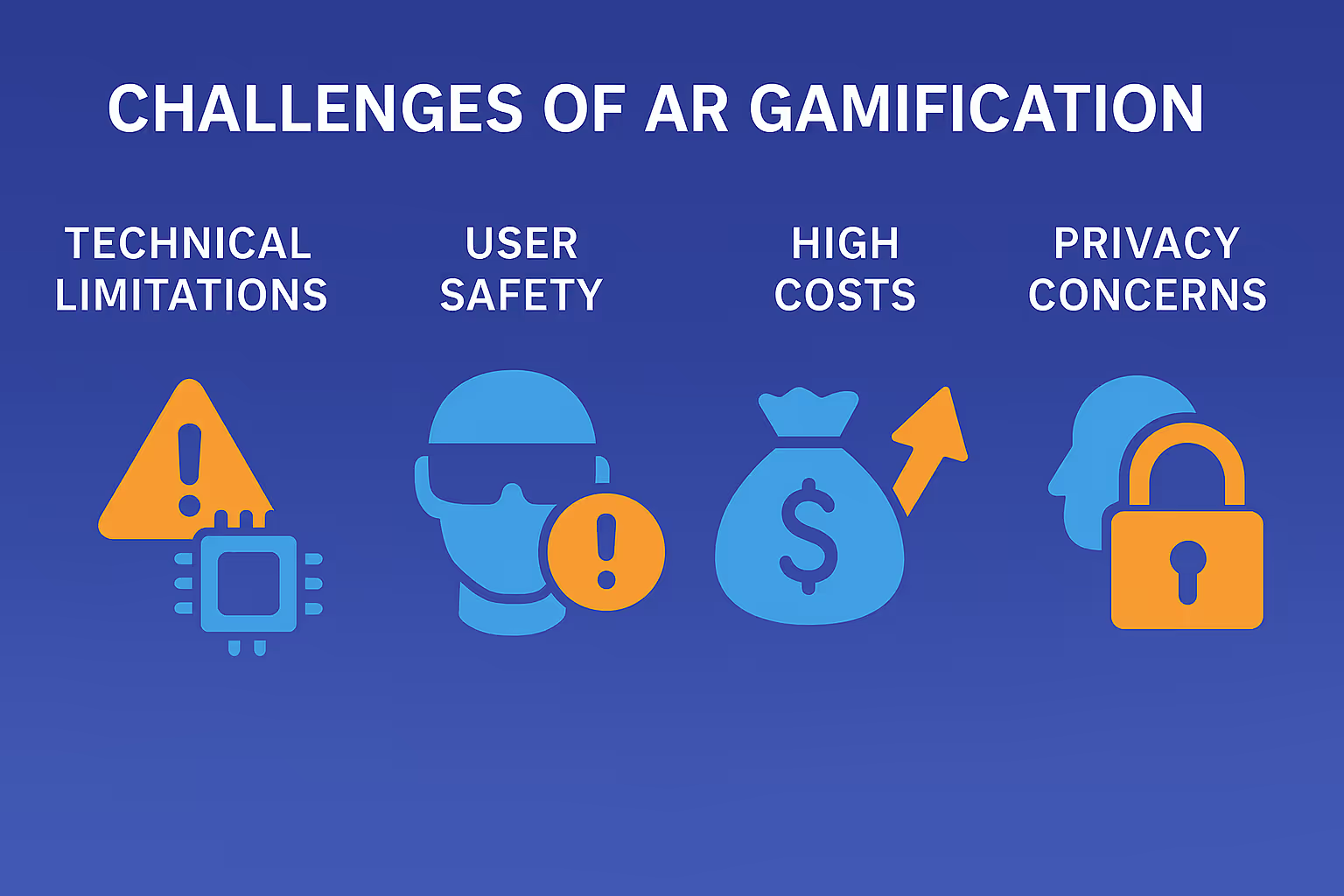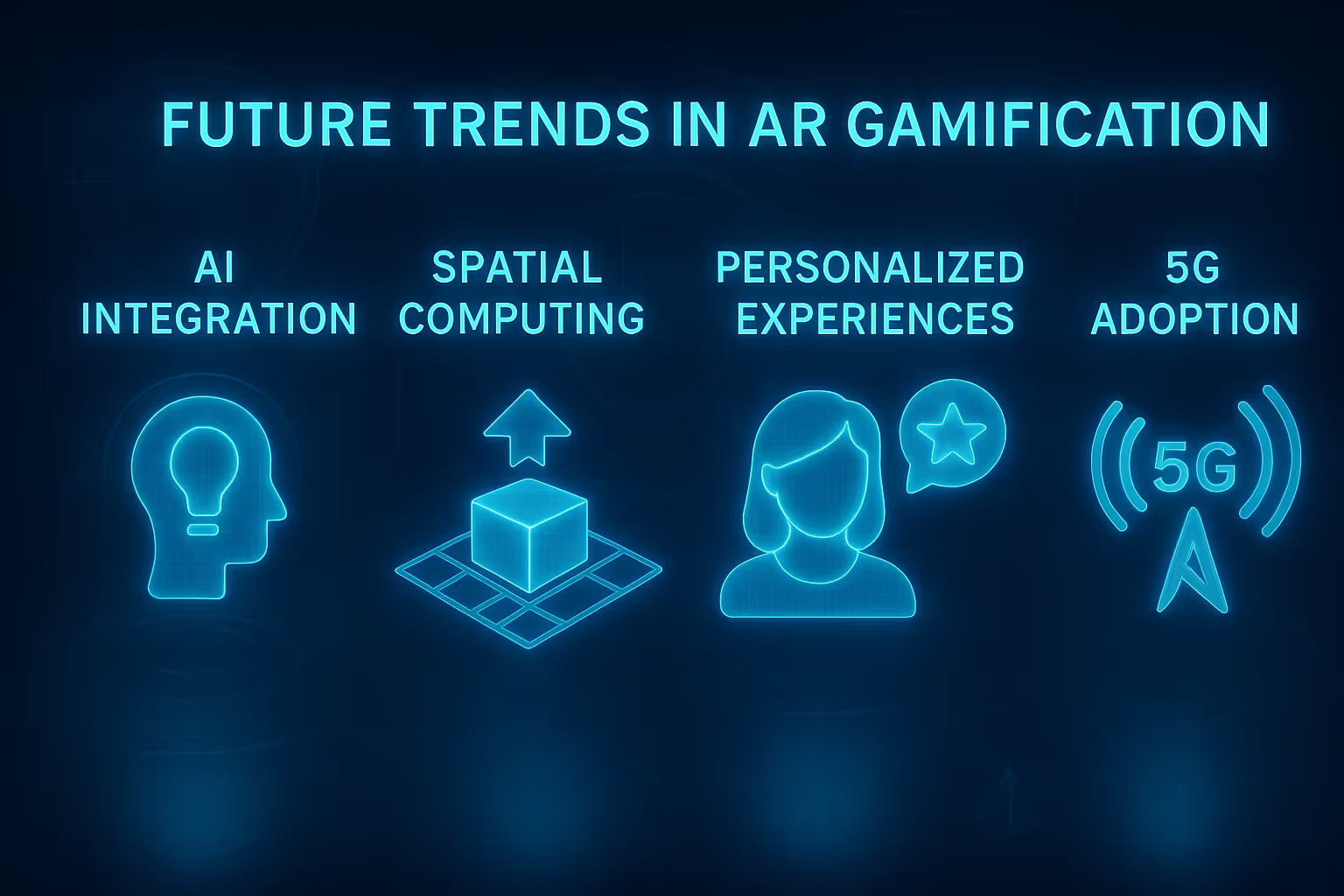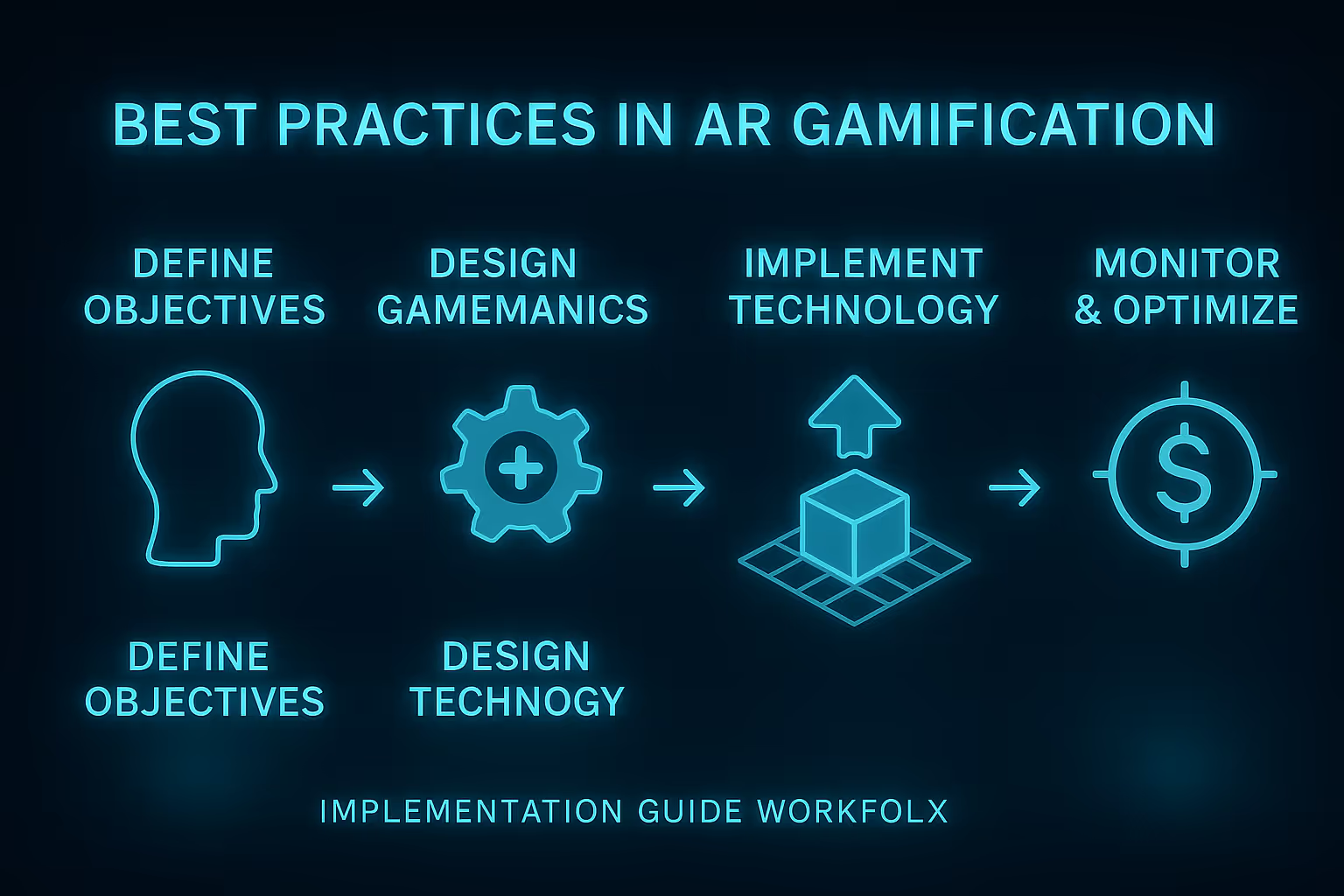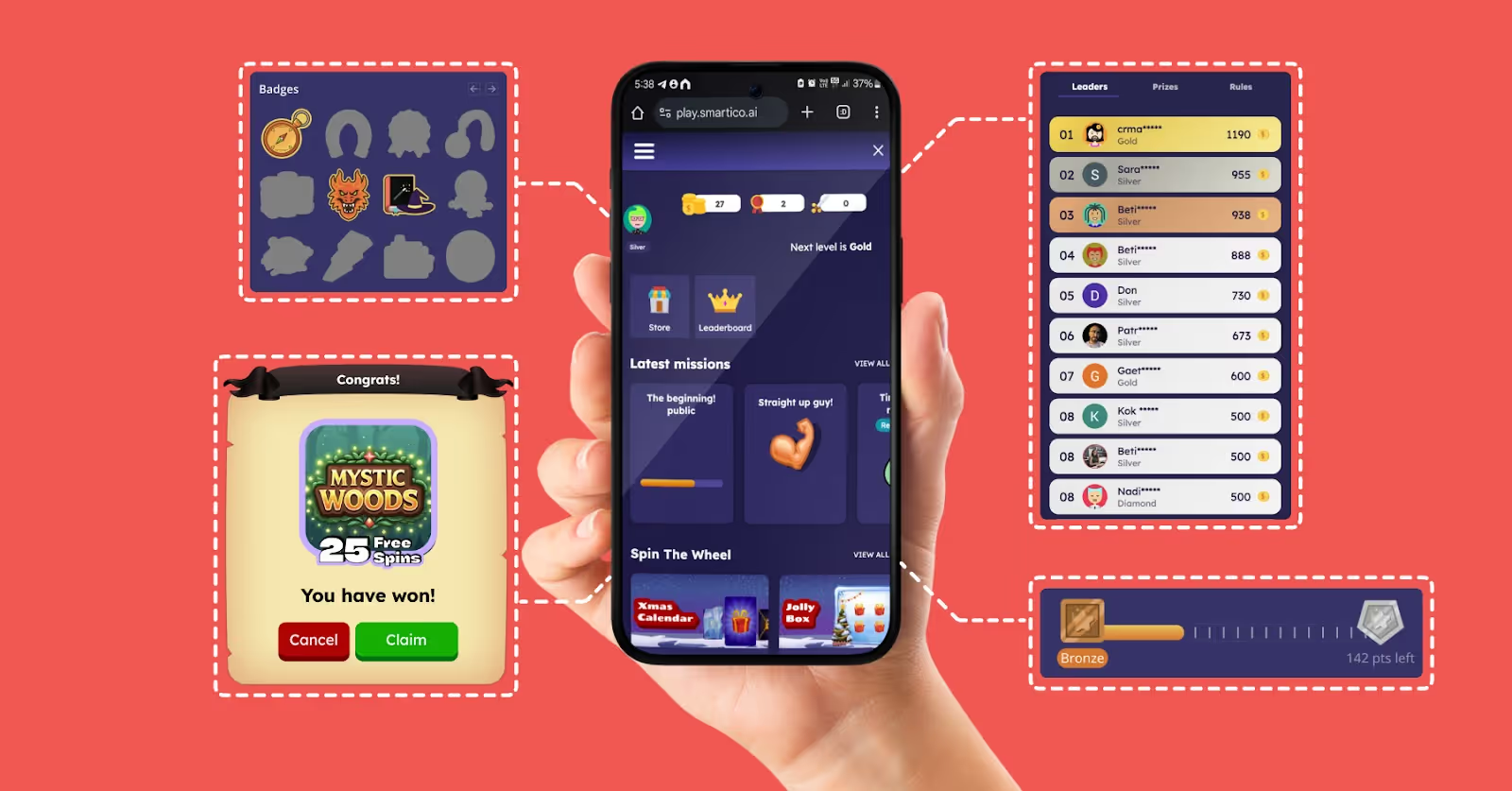Augmented Reality (AR) in Gamification: The Ultimate Guide

Imagine walking into a store where virtual dragons fly around the products you're browsing, or completing work training by battling digital monsters in your office space. This isn't science fiction anymore. Augmented reality in gamification is changing how we interact with brands, learn new skills, and engage with digital experiences.
The mix of AR technology and game mechanics creates deep experiences that blend our physical world with digital rewards, challenges, and interactive elements. Companies across industries are discovering that when you add AR to gamification strategies, engagement rates and brand recall improve reach astounding heights.
In this article, we look at AR Gamification in depth to help you make the best decisions going forward.
What Is Augmented Reality Gamification?
Augmented reality gamification combines AR technology with game design elements to create interactive experiences in real-world environments. Unlike virtual reality, which creates entirely digital worlds, AR overlays digital information onto what you already see through your smartphone, tablet, or AR glasses.
The core elements include points, badges, leaderboards, challenges, and achievements that appear as digital overlays in your physical space. Players can collect virtual items, complete location-based missions, or compete with others while moving through real environments.
This approach works because it touches our most fundamental psychological drivers. When people complete AR-based challenges, their brains release dopamine, creating satisfaction and motivation to continue engaging. The technology transforms routine activities into rewarding adventures just like that.
The Psychology Behind AR Gamification
The human brain responds powerfully to gamified experiences. When we achieve goals or receive rewards, our brains release dopamine, serotonin, and endorphins. AR amplifies these effects by making achievements feel more tangible and immediate.
Three key psychological principles drive AR gamification success.
- First, competence - people need to feel capable of mastering challenges. AR games can adjust difficulty in real-time based on player performance.
- Second, autonomy - users want control over their experience. AR allows players to choose their path through physical spaces.
- Third, relatedness - humans crave social connection. AR enables shared experiences where multiple people can see and interact with the same digital elements.
The visual nature of AR also triggers stronger memory formation. Studies indicate that people retain 80% of what they learn through immersive AR experiences, compared to only 20% from traditional methods. This happens because AR engages multiple senses simultaneously, creating richer neural pathways.
Key Technologies Powering AR Gamification
Modern AR gamification relies on several core technologies working together.
- Computer vision allows devices to understand and track real-world environments. GPS and location services enable geo-based gameplay. Cloud computing processes complex AR interactions in real-time.
- Smartphone cameras serve as the primary AR interface for most consumers. Apple's ARKit and Google's ARCore provide the foundational platforms that developers use to create AR experiences. These systems handle tasks like motion tracking, environmental understanding, and light estimation automatically.
- WebAR technology removes the need for app downloads. Users can access AR experiences directly through web browsers, making participation more accessible. The WebAR market grew from $3.98 billion in 2019 to $6.16 billion in 2020, with projections reaching $21 billion by 2024.
- Emerging technologies like LiDAR scanning and 5G networks are expanding possibilities further. LiDAR creates detailed 3D maps of environments, enabling more precise object placement. 5G provides the bandwidth needed for complex, multi-user AR experiences.
Industries Transformed by AR Gamification

Retail and E-commerce
Retailers use AR gamification to bridge online and offline shopping experiences. Customers can participate in virtual treasure hunts, try on products virtually, or compete for discounts through AR challenges.
Furniture retailers let customers place virtual furniture in their homes while earning points for sharing photos on social media. Beauty brands offer virtual makeup try-ons with achievement systems that reward product exploration. These approaches reduce return rates by 25% to 40% while increasing engagement by up to 70%.
Education and Training
Educational institutions integrate AR gamification to make learning more engaging. Students can explore historical sites through AR, complete science experiments with virtual equipment, or solve math problems that appear in their physical environment.
Corporate training programs use AR to simulate real-world scenarios safely. Employees can practice machinery operation, customer service interactions, or safety procedures through gamified AR modules. Companies report that AR-trained employees retain information significantly better than those using traditional methods.
Healthcare
Healthcare applications include AR games that help patients with physical therapy, medication adherence, and pain management. Patients can complete exercises while virtual coaches provide guidance and encouragement. Medical students practice procedures on virtual patients overlaid onto real mannequins.
Mental health applications use AR to create calming environments or exposure therapy scenarios in controlled settings. The gamification elements help maintain patient engagement throughout treatment programs.
{{cta-banner}}
Events and Marketing
Event organizers create AR treasure hunts and interactive experiences that encourage attendee participation. Music festivals use location-based AR games where visitors collect virtual items and compete for real prizes. These activities increase social media sharing and extend event engagement beyond physical attendance.
Marketing campaigns take advantage of AR gamification for product launches, brand awareness, and customer data collection. Brands report collecting over 150 leads in just three days through AR gamification campaigns, with engagement rates reaching 82%.
Popular AR Gamification Applications
.avif)
Location-Based Games
Games like Pokémon GO pioneered location-based AR gaming, encouraging physical movement while players hunt virtual creatures. This model has expanded to include fitness applications, tourism guides, and educational experiences.
Cities and tourism boards create AR walking tours where visitors solve puzzles, learn historical facts, and compete with other tourists. These experiences increase visitor engagement and provide valuable data about tourist behavior patterns.
Social AR Experiences
Social media platforms integrate AR gamification through filters and effects that respond to user actions. Users can compete in challenges, share achievements, and collaborate on AR projects. These features significantly increase user engagement and time spent on platforms.
Multiplayer AR games allow friends to collaborate or compete in shared virtual spaces. Players can see each other's avatars and interact with the same digital objects, creating social bonds through shared experiences.
Training and Simulation
Professional training programs use AR gamification for skill development in safe environments. Construction workers practice safety procedures, medical professionals rehearse surgeries, and customer service representatives handle difficult scenarios through gamified AR simulations.
These applications provide immediate feedback, track progress over time, and adapt difficulty based on individual performance. The game elements maintain engagement while serious learning objectives are achieved.
Benefits of AR Gamification

Increased Engagement
AR gamification significantly boosts user engagement compared to traditional methods. Interactive AR experiences can increase engagement by 100% to 150% compared to standard approaches. The immersive nature of AR combined with game mechanics creates compelling reasons for continued participation.
Users spend more time with AR gamified content because the experiences feel novel and rewarding. The technology transforms passive consumption into active participation, leading to deeper brand connections.
Better Learning and Retention
AR gamification improves learning outcomes substantially. Students using AR-based learning retain much more information compared to those using traditional methods. The multi-sensory nature of AR creates stronger memory formation.
Gamification elements like progress tracking, achievements, and challenges maintain motivation throughout learning processes. Learners can see their advancement visually, which reinforces continued effort.
Data Collection and Insights
AR gamification provides rich data about user behavior, preferences, and engagement patterns. Companies can track which features users interact with most, how long they engage with content, and what drives completion rates.
This data enables personalized experiences and targeted marketing efforts. Businesses can identify high-value users, predict churn, and optimize reward systems based on actual user behavior.
Social Connection and Community Building
AR gamification creates shared experiences that build communities around brands or causes. Players collaborate on challenges, compete in leaderboards, and share achievements with friends. These social elements increase user retention and word-of-mouth marketing.
The technology enables real-world meetups and events centered around AR experiences. Communities formed through AR gaming often extend beyond the original application into lasting relationships.
Challenges and Limitations

Technical Constraints
Current AR technology faces several limitations that affect gamification implementation. Battery life remains a significant concern, as AR applications drain device power quickly. Processing requirements can cause overheating and reduced performance on older devices.
Accuracy of object tracking and placement can be inconsistent, especially in changing lighting conditions or complex environments. Network connectivity requirements may limit experiences in areas with poor internet access.
User Adoption Barriers
Despite growing popularity, AR adoption faces resistance from some users. Privacy concerns about cameras and location tracking prevent some people from participating. The learning curve for new AR interfaces can be steep for less tech-savvy users.
Device compatibility issues mean not all users can access the same AR experiences. Older smartphones may lack the processing power or sensors needed for complex AR applications.
Cost and Development Complexity
Creating high-quality AR gamification experiences requires significant investment in development, testing, and ongoing maintenance. 3D asset creation, complex programming, and cross-platform compatibility add to development costs.
Organizations need specialized skills and tools that may not be readily available. The rapid pace of AR technology evolution means applications may require frequent updates to remain compatible.
Future Trends and Predictions

Market Growth Projections
The AR market is experiencing explosive growth. Valued at $62.75 billion in 2023, projections show it reaching $1,869.40 billion by 2032, with a compound annual growth rate of 45.4%. The gamification market is also expanding rapidly, growing from $18.05 billion in 2023 to $22.45 billion in 2024.
Professional XR markets are expected to reach approximately $28 billion by 2025, with AR showing particularly strong growth in industrial applications. The combination of AR and gamification represents a significant portion of this growth.
Technology Advancements
Artificial intelligence integration is making AR experiences smarter and more personalized. AI enables real-time content generation, improved object recognition, and adaptive gameplay that responds to individual user behavior.
New hardware developments include lighter, more powerful AR glasses and improved smartphone AR capabilities. Apple and Google continue pushing boundaries with better motion capture, environmental understanding, and developer tools.
WebAR adoption is accelerating as browser capabilities improve. This trend makes AR experiences more accessible without requiring app downloads, potentially reaching broader audiences.
Emerging Applications
Multi-sensory AR experiences use haptic feedback, spatial audio, and even scent generation. These developments create more immersive and memorable gamification experiences.
Spatial computing advances are moving AR beyond screens toward environmental displays and interactive surfaces. This evolution could transform how we interact with physical spaces.
Social AR platforms are developing persistent virtual objects that exist in physical locations for all users to see. This capability enables new forms of collaborative gaming and community building.
Best Practices for Implementation

User Experience Design
Successful AR gamification prioritizes user experience above technical capabilities. Interfaces should be intuitive and accessible to users with varying technical skills. Clear instructions and progressive disclosure help users learn complex AR interactions gradually.
Visual design must work in varied lighting conditions and environments. High contrast elements, appropriate sizing, and consistent visual language ensure usability across different contexts.
Testing with diverse user groups identifies potential accessibility issues and usability problems before launch. Iterative design based on user feedback creates more successful experiences.
Content Strategy
Compelling content balances entertainment with meaningful objectives. Game mechanics should support rather than overshadow core business goals. Achievement systems need to provide appropriate challenges without creating frustration.
Narrative elements can increase engagement and emotional connection. Stories that connect to user values and interests maintain long-term participation.
Regular content updates keep experiences fresh and encourage return visits. Seasonal events, new challenges, and evolving storylines maintain user interest over time.
Performance Optimization
AR applications must perform well across different devices and network conditions. Optimized 3D assets, efficient code, and adaptive quality settings ensure smooth experiences. Regular performance testing identifies and resolves technical issues.
Analytics implementation tracks user behavior, technical performance, and business metrics. This data enables continuous optimization and demonstrates return on investment.
Measuring Success and ROI

Key Performance Indicators
Successful AR gamification campaigns track multiple metrics beyond basic engagement. User acquisition costs, lifetime value, and retention rates provide insights into long-term business impact. Session duration and completion rates indicate content effectiveness.
Social sharing and word-of-mouth metrics measure community building success. Brand awareness surveys can quantify marketing impact beyond direct user interactions.
Conversion tracking measures how AR gamification influences purchasing decisions, lead generation, or other business objectives. Attribution modeling helps identify which elements drive the most valuable outcomes.
Data Analysis and Optimization
Regular analysis of user behavior data reveals optimization opportunities. Heat mapping shows which AR elements receive the most interaction. User journey analysis identifies drop-off points and engagement patterns.
A/B testing different game mechanics, reward structures, and visual designs optimizes performance. Continuous iteration based on data insights improves user experience and business results.
Predictive analytics can identify users at risk of churning and trigger retention campaigns. Machine learning models improve personalization over time.
The Role of Smartico.ai in AR Gamification

Smartico.ai stands as the first and leading unified Gamification and CRM Automation software in history, specifically designed for the iGaming industry. Founded in 2019 and headquartered in Bulgaria, Smartico has revolutionized how operators engage players through revenue-boosting gamification solutions.
It combines CRM automation, gamification mechanics, and AI-powered insights in a single real-time system. Smartico's unified approach eliminates the need for multiple vendor relationships while providing smooth integration between customer management and engagement tools.
Key features include customizable gamification elements like points, badges, leaderboards, and missions that integrate directly with CRM workflows. The platform offers free-to-play mini-games, dynamic bonus engines, and customizable jackpot systems that provide immersive player experiences.
Smartico's AI models, known as Smartico Intelly, turn player data into actionable predictions. The system identifies churn risks, predicts lifetime value, and determines optimal timing for player communications. RFM segmentation capabilities help operators target players based on recency, frequency, and monetary behavior patterns.
Smartico supports unlimited brands without additional costs, making it ideal for multi-brand operators. Real-time campaign management, automated workflows, and comprehensive analytics provide operators with complete control over player engagement strategies.
What sets Smartico apart is its deep understanding of iGaming psychology and player behavior. It applies proven gamification principles while respecting industry-specific requirements and regulations. Multi-channel communication options include pop-ups, push notifications, SMS, and built-in inbox systems.
As AR technology continues evolving, platforms like Smartico.ai are positioned to integrate these capabilities easily into existing gamification frameworks. The combination of proven engagement mechanics with emerging AR technologies promises to create even deeper and more effective player experiences.
To find out how Smartico can get your business specifically to much higher levels of engagement and revenue, book your free, in-depth demo below.
{{cta-banner}}
Conclusion
Augmented reality in gamification represents a fundamental shift in how we create engaging digital experiences. The technology transforms passive interactions into active adventures while providing measurable business benefits across industries.
Success requires careful attention to user experience, compelling content, and technical performance. Organizations that embrace AR gamification early while learning from user feedback will establish competitive advantages as the technology matures.
The future promises even more immersive and intelligent AR experiences as AI, hardware, and network technologies continue advancing. Companies that understand both the technical possibilities and human psychology behind AR gamification will create the most successful implementations.
Whether you're exploring AR gamification for marketing, education, training, or entertainment, the key lies in focusing on user value rather than technical novelty. The most effective AR gamification experiences solve real problems while making the process enjoyable and rewarding.
Did you find this article helpful? If so, consider sharing it with other professionals such as yourself.
Ready to use Smartico?
Join hundreds of businesses worldwide engaging players with Smartico.










